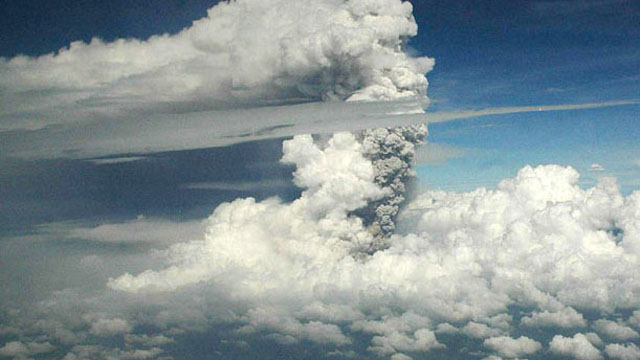When headlines go wrong (for the Grimsvotn update for 11/4/2010)

One of the biggest problems I find in the coverage of geologic events in the media is the relationship between cause and effect. Many times the confusion of what factors can bring about a geologic event and the signals that tell us that the event may occur is based on poor wording, but it can propagate into the general public who get their information from these articles.
A great example of this is the current situation at Grímsvötn in Iceland. The latest headline from the Press Association is “Melting ice could trigger eruption.” Now, I read this and think that the melted ice (water) will cause the volcano to start erupting, in other words, it is merely the presence/lack of water that controls whether the volcano erupts. However, the presence of this melt water likely suggests that magma is close to the surface and, of course, that is what will cause any eruption to occur. The only role water might play is any explosions that could be caused by flash-boiling of the meltwater – a phreatic or phreatomagmatic event. The meltwater that is being released from Grímsvötn is a result of magma intrusion, but an independent event that will cause the volcano to erupt.
Of course, with the events at Eyjafjallajökull earlier this year, many media outlets are trying to imply that Grímsvötn will wreak the same chaos to air travel, which is likely not the case. Although the volcanoes are similar, by merely looking at back the history of eruptions at Grímsvötn, we know that there weren’t major air travel disruptions during the volcano’s 1984, 1998 or 2004 eruptions, so to assume that the 2010 would cause such disruption has no real basis in fact. Of course, the media does love fear-mongering without the science to support their doom prognostications, so I suppose this is no surprise.
The floodwaters are waning at the volcano, which might suggest that the melting event is also slowing down – and there are no other indications that an eruption is starting, however there are still signs that an eruption could occur in the near future (although that might mean in the next few weeks, months or year). If you want to see all the details of the Grímsvötn Jokulklaup in all its hydrologic glory, check out the post from the Icelandic Meteorological Office.
Top left: The 2004 crater area on Grímsvötn in an image by Craig Miller.





